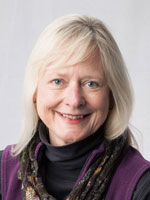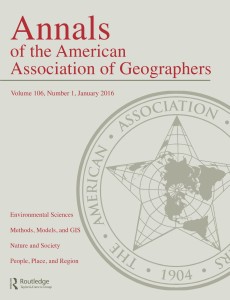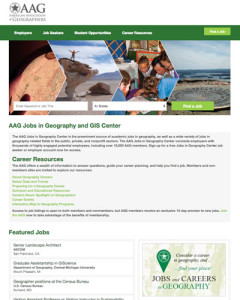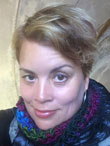Doreen Massey, emeritus professor of geography at The Open University, and one of the major figures in twentieth-century geography, passed away suddenly on March 11, 2016, at the age of 72. She was one of the most influential thinkers on the left, and her work on space, place and power has been recognized all over the world.
Doreen Barbara Massey was born on January 3, 1944, in Manchester, England. She spent most of her childhood in the Wythenshawe area of the city, a vast council estate. In the post-war era, the new ‘welfare state’ in Britain aimed to deliver a more just society. As a result Massey, coming from a working class family, could benefit from access to decent schooling, free health care and subsidized housing. This context strongly shaped her views and life’s work, particularly her left-leaning politics, and her interests in social and spatial inequalities.
Massey studied for a bachelor’s degree in geography at Oxford University in the mid-1960s. She pursued some specialisms in economic geography, including studying location theory, but was particularly stimulated by the interdisciplinary setting of the Oxford college system, spending much of her time talking with physicists, anthropologists and people from other disciplines. Although she loved intellectual exchange and using her brain she didn’t think that becoming an academic in the Oxford environment would enable her to do that.
Her first major position after graduating was at the Centre for Environmental Studies (CES) in London. This research institute was established by the Labour government in 1968 and tasked with looking at the problems of cities and regions in Britain. There she found a stimulating diversity of people including sociologists, physicists, economists and geographers who were both intellectually productive and politicised. Among the studies that she undertook in this period were “An operational urban development model of Cheshire” (with Martyn Cordey-Hayes, 1970), and “The basic: service categorization in planning” (1971).
In 1971-72 Massey spent a year away from CES studying for a master’s degree in the Department of Regional Science at the University of Pennsylvania in Philadelphia. She chose to study mathematical economics because she was becoming increasingly critical of the models that she was using in her work, particularly the location theory that she was taught at Oxford, because of their basis in neo-classical economics. However, with her lack of training in neo-classical economics, she felt the need to ‘know the enemy.’
At Penn she met a group of French Marxists and became very involved in philosophical discussions about French structuralism. This started another train of her intellectual thinking: she began to see a way of reading Marx that she found politically acceptable. The first thing she did on her return to the UK was to write a paper entitled “Towards a critique of industrial location theory” which was published in 1973.
Back at CES, Massey continued working on economic geography issues, particularly regions and inner cities within the UK. She established a working partnership with Richard Meegan, among others, and their influential joint publications included The geography of industrial reorganisation: The spatial effects of the restructuring of the electrical engineering sector under the industrial reorganization corporation (1979), and The anatomy of job loss: The how, why, and where of employment decline (1982). From 1973 she also sat on a Labour Party subcommittee to engage in the policy debate about inner cities and regions, regional inequality and the North-South divide in Britain.
Through the 1970s CES had established itself as the centre for left-wing thinking within urban and regional analysis; when a Conservative government came to power in 1979 it was shut down. At the time Massey was still working on research funded by a grant so she transferred herself to the London School of Economics to complete the work; she also made the grant last longer by doing some teaching at University of California, Berkeley.
While she was in the United States, she saw an advertisement for a position at The Open University (OU) and applied. OU was established in the 1960s thanks to the vision and determination of Labour Prime Minister, Harold Wilson. It was the world’s first successful distance teaching university, founded on the belief that communications technology could bring high quality degree-level learning to people who had not had the opportunity to attend traditional campus universities.
Massey felt that OU, rather than a traditional university, would enable to be the intellectual, teacher and researcher that she wanted to be. In fact, she stayed at OU for 27 years until retirement, despite offers of professorships from elsewhere, including Oxford University. She remained loyal to OU because of its openness and accessibility to all who wanted to learn. She believed in being excellent without being exclusive and elitist.
Massey’s work reached into different fields of geography – economic geography, Marxist geography, feminist geography, cultural geography – but all concerned understanding power relationships in all of their complexity, and challenging them.
Her early work at CES established the basis for her later academic work in economic geography, particularly the ‘spatial divisions of labor’ theory that the unevenness of the capitalist economy created divisions between rich and poor regions and thus between social classes, causing social inequalities. From the 1970s her work on spatial and social inequalities was informed by Marxism and this made a significant contribution to the radicalization of human geography.
Two of her books became influential beyond geography too: Capital and land: Landownership by capital in Great Britain (with Alejandrina Catalano, 1978) was a Marxist analysis of capitalist landownership in the UK, while Spatial divisions of labour: Social structures and the geography of production (1984, 1995) showed an alternate way of understanding unbalanced regional development.
Over subsequent years Massey refined the ‘spatial divisions of labour’ exploring the multi-dimensional nature of power and space. Her interest was not only in theorizing ‘space’ and ‘place’ but also in demonstrating their importance to everyday life. In her own words: “A lot of what I’ve been trying to do over the all too many years when I’ve been writing about space is to bring space alive, to dynamize it and to make it relevant, to emphasize how important space is in the lives in which we live. Most obviously I would say that space is not a flat surface across which we walk … it’s like a pincushion of a million stories.” She examined the concepts of space and place at different scales, engaging in critiques of globalization, regional development, and the city. Among her many publications were For Space (2005), and World City (2007, 2010).
Massey also engaged in feminism. She was politically active in the women’s movement from the late 1960s. Her activism included support for the wives of miners during the 1984-85 miners’ strike, giving moral and practical support at pickets and being involved in the Women Against Pit Closures movement. However, she found it difficult to include feminism in her academic work. She felt that the intellectual debates that she had within the women’s movement didn’t relate to the debates that were going on within feminist geography. It was some time before she found the right intellectual ‘space’ to engage with it. Her growing involvement in feminist work and her thoughts on the development of a geography of women are found in Space, Place, and Gender (1994), a collection of 11 essays written between 1978 and 1992.
Although Massey engaged in her interests on different scales and in different locations, London, the city where she lived, was a particular focus. Between 1982 and 1985 she was a member of the governing body of the Greater London Enterprise Board (GLEB). The board’s role was to evolve and implement the economic policy for London, which involved thinking through some major issues. Fellow board member, John Palmer, remembered how she “would ask searching questions on issues surrounding the advancement of the rights of women and ethnic minorities in the preparation of development strategies for GLEB investments.” Another board member, Robin Murray, described how she “insisted that space was social not just physical: gendered space, class space.” This is one example of how Massey sought to apply academic concepts to contemporary society and then to translate them into concrete projects. She was energised by this engagement as, at the time, the Greater London Council was led by the socialist politician, Ken Livingstone, and their efforts sought to counter the neo-liberal policies being rolled out by the Thatcher government.
Massey lived for many years in the Kilburn area of northwest London and she drew on this for her essay, “A Global Sense of Place.” She walked the reader along Kilburn High Road, the main thoroughfare, describing shops, people, signs and graffiti. Through this she argued for a more contemporary understanding of ‘sense of place’ based less on a particular location and more on the networked reality of globalization.
Although Massey was passionate about London, she did not like many of the changes of recent years. Her book, World City, was a definitive account of how London came to be one of the centres of global finance, and the detrimental effects this had on the city and its inhabitants. She was interested in initiatives for ordinary people reclaiming the city from the super-rich and make it more livable, in the spirit of the radical culture that she was engaged with in the 1980s. For example, she was sympathetic to the Take Back the City group and the Good London project.
It was the marrying of philosophical and conceptual issues on the one hand with political activism on the other that was the signature of Massey’s work throughout her life. Jo Littler and Jeremy Gilbert wrote in an online post after the announcement of her death that “it’s difficult to think of a British scholar of her stature who remained so consistently and directly engaged in immediate political activities alongside rigorous academic work.” She was fiercely committed to creating societies where there is democracy, equality and freedom, and to the creative and radical movements that might bring about such change.
Another outlet for her activist ideas was the journal Soundings, which she founded with Stuart Hall and Michael Rustin in 1995. At one time or another, all three founding editors had been associated with the publications Marxism Today and New Left Review, and through Soundings they aimed to continue within the traditions of the new left. The journal brought together critical thought and transformative action, presenting serious content without being too heavily academic.It remains a space for academics, activists, policy makers and practitioners to engage with one another.
From 2013 Massey, Hall and Rustin collaborated on “The Kilburn Manifesto,” a project mapping the political, economic, social, and cultural nature of the neoliberal system dominating Britain and most of the western world, and arguing for radical alternatives. The manifesto was published in 12 free online monthly installments and subsequently compiled into a book, After Neoliberalism: The Kilburn Manifesto (2015).
Massey remained on the editorial board of Soundings and, as recently as September 2015, wrote a guest editorial entitled “Exhilarating times,” reflecting on the new politiocal directions that may be possible under the Labour Party’s new leader, Jeremy Corbyn.
Although Massey’s work was generally associated with contemporary western capitalist society, her work also had an international dimension. For example, she spoke fluent Spanish and spent a year in Nicaragua, writing a book about it (Nicaragua, 1987).
She worked with South African activists during the transitional government, specifically with Frene Ginwala, who later became the first person of color to be Speaker of the South African Parliament. They led a workshop on gender and unpaid labor at a time when such issues were sidelined in economic debate. From this came the publication Gender and economic policy in a democratic South Africa (with Frene Ginwala and Maureen Mackintosh, 1991).
Meanwhile, Massey’s continuing interest in space and power led her to a long standing engagement with political change in Venezuela. She was proud to have been invited to advise Hugo Chavez’ government, and to have had one of her key conceptual phrases – ‘geometries of power’ – directly cited by Chavez in his political speeches. The concept of power-geometry was adopted as a means of thinking through the program of decentralization and equalization of political power, specifically by giving a meaningful political voice to poorer regions and the previously-excluded within the cities. Her work in Venezuela included discussions, lectures, seminars, public meetings and television appearances.
She was also a member of the Editorial Board of Revista Pós, the journal of the School of Architecture and Urbanism of Sao Paulo, Brazil, which publishes research from different academic fields that relate to architecture and the city.
Although Massey formally retired as emeritus professor in 2009 she retained her base at The Open University and continued her active engagement in a number of projects including “The future of landscape and the moving image.” She also continued with speaking engagements and involvement in educational television programs and books, as well as appearing frequently in the media commentating on issues such as industry and regional trends.
It is no understatement that Massey’s ideas, theories and concepts transformed human geography and influenced many scholars. Not only was she a giant within the discipline but she was also widely read and highly influential across a range of other disciplines. Furthermore, her work, along with that of scholars such as David Harvey, established geography as the discipline that can offer a powerful and intellectual critique of capitalism.
Massey’s work earned her numerous awards including the Royal Geographical Society’s Victoria Medal (1994), the Prix Vautrin Lud, considered to be geography’s Nobel Prize (1998), the Swedish Society of Anthropologists and Geographers’ Anders Retzius Medal in Gold (2003), the Royal Scottish Geographical Society’s Centenary Medal (2003), and the American Association of Geographers’ Presidential Achievement Award (2014). However, due to her vehement anti-establishment feelings, she declined the award of an Order of the British Empire (OBE).
She was made a Fellow of the Academy of Social Sciences (1999), the Royal Society of Arts (2000) and the British Academy (2002). Although she never did a PhD herself, she received honorary doctorates from the University of Edinburgh (2006), National University of Ireland (2006), University of Glasgow (2009), Queen Mary University of London (2010), Harokopio University, Greece (2012), and the University of Zurich, Switzerland (2013).
Massey’s passing is a huge loss to geography and the many people who were inspired by her work. The profound impact that she had on people can be seen in the many tributes on the internet that appeared after the announcement of her death. She was a role model for doing socially-relevant academic work, and showed that it was possible to combine rigorous scholarship with political conviction and activism. She was a strong character who said what she thought and could be stubborn, but equally she was warm, caring, encouraging, kind, and generous of spirit, as well as full of humor.
Despite originally coming from Manchester, Massey was a loyal fan of Liverpool football team and often went to watch matches. Her other passion was bird-watching, which she often enjoyed while visiting her sister, Hilary, in the English Lake District.
 Pick up your GeoMentor ribbon! Drop by the GeoMentors space (in the AAG booth near conference registration) to get your GeoMentor name badge ribbon to showcase your involvement in this important community. Not a GeoMentor yet? Register as a GeoMentor during the meeting and get a ribbon! This is a great way for GeoMentors to meet each other, network, and start new volunteer collaborations!
Pick up your GeoMentor ribbon! Drop by the GeoMentors space (in the AAG booth near conference registration) to get your GeoMentor name badge ribbon to showcase your involvement in this important community. Not a GeoMentor yet? Register as a GeoMentor during the meeting and get a ribbon! This is a great way for GeoMentors to meet each other, network, and start new volunteer collaborations!

 Adds New Features and Functionality
Adds New Features and Functionality